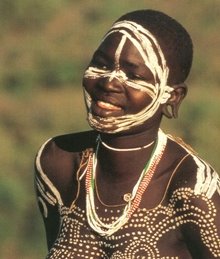DEFINING A DISCIPLINE
Nilotics is the philosophical inspection whose object is to determine the actual nature of visual things that were created along the Nile valley and initially kept by the ancient African people. Nilotics aims at establishing the meaning, structure, and principles of whatever things that were made and kept insofar as they were to be seen.
The term Nilote has appeared in various academic studies to mean a group of indigenous African peoples who originated in northeastern region of the continent and are understood to have lived along river Nile. Although the Nilotic study is popularly conceived as an investigation referring to linguistics and anthropology of the modern peoples in the region, Nilotics as a field is a study that is now being advanced by visual artists. It is being formulated to encompass all important academic disciplines in human history by protracting an excessively subtle and highly theoretical perspective from which it has been subjected to some criticisms by retiring academics.
Photographs of modern African women taken and compiled by Carol Beckwith and Angela Fisher (2005), however, show images of beautiful necks displaying the art of adornment. With the advent of Women of the African Ark images of 2006 calendar, there are seen pictures that have touched the foundation of African aesthetics, the beauty originally derived from what a human neck says. The visual, Ng’utmbaka, is here in a calendar. This is beyond the spoken language common to linguistic science. Here we have the cradle of conversation on what is good and made to be seen. In Kiswahili, for instance, shingo la opanga is the natural beauty in the neck of an African woman. Beckwith and Fisher have given us what the girls and women of African society are telling with their necks.
In these pictures, Nilotics as a discipline invites our imagination in analyzing and enjoying the visual stories, which are coming from the neck of feminine conversations.



